#sabiha sultan daughter of abdulmecid
Text
On this day, 15 April, in Ottoman history
15 April 1558 - death of Hürrem Sultan; wife of Süleyman I and mother - among others - of his successor Selim II, she spent her last years plagued by a chronic illness, maybe a tumor. Süleyman himself, now 62 years old, suffered from gout and was advised by his doctors to spend the winters in Edirne, but Hürrem wouldn’t let him leave Istanbul: “But as long as the Russian Sultana lived, she rarely let him leave Constantinople, because this woman was the mistress of the life of this gentleman, by whom she was extremely loved. And because she wants him always near her and is doubtful for her own life on account of illness, she rarely or never lets him part from her". Hürrem followed her husband to Edirne until maybe winter 1557-1558, but her conditions took a turn for the worst in March 1558, and Süleyman became so worried that he put on hold all the matters of state until his wife got better. In the end, Hürrem Sultan died on Friday 15 April 1558. French Ambassador Jean de la Vigne announced her death in his May 1558 dispatch: “The [Haseki], wife of the Grand Seigneur, died at about two o'clock in the morning, with the great grief of His Majesty, Rustem Paşa, and all those who owed their high position to her. The Grand Seigneur was so affected that he has aged greatly. They say that the day before she died, he promised her and swore by the sould of his father Selim that he would never approach another woman”. Funeral prayers were said in the mosque of Bayezid II, and Hürrem’s coffin was carried by the viziers. She was interred by the Şeyhülislam himself inside the courtyard of the Süleymaniye Mosque.
15 April 1642 - birth of Süleyman II; three months younger than Mehmed IV, he wwas Saliha Dilaşub Sultan’s son and Ibrahim’s second-born. This meant that he lived inside the Kafes for 39 years, while his eldest brother reigned. He succeeded him on 8 November 1687, but reigned only a couple of years. He had six consorts, according to a Privy register document inside the Topkapi Palace Archives, but had no children. His mother Saliha Dilaşub was Valide Sultan until 1690, when she died. Afterwards, the woman with the highest stipend in the palace was Ümmügülsüm Sultan, Mehmed IV’s unmarried daughter. He fell sick in 1691 and asked to be brought to Edirne Palace, where he died on 22 June 1691.
15 April 1848 - birth of Sabiha Sultan; daughter of Abdülmecid and his Second Ikbal Mahitab Hanım (later Fifth Imperial Consort), she was born in Çırağan Palace. She died just a year later and was buried in the New Mosque.
#history#on this day in history#on this day in ottoman history#haseki hurrem sultan#suleyman i#suleyman ii#ummugulsum sultan daughter of mehmed iv#sabiha sultan daughter of abdulmecid#mahitab kadin
40 notes
·
View notes
Photo
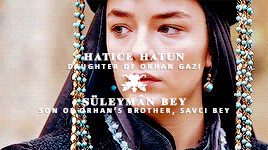


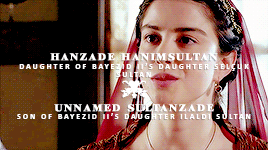

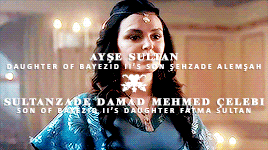
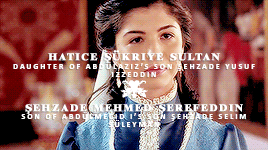
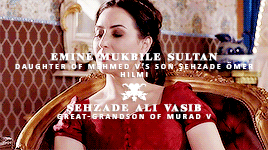
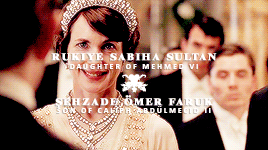

Ottoman princesses who made intra-dynastic marriages -- requested by anon
#history#historyedit#ottoman history#hatice hatun daughter of orhan gazi#bayezid ii#mehmed ii#rukiye sabiha sultan daughter of mehmed vi#abdulaziz#mehmed v#murad v#sehzade omer hilmi son of mehmed v#sehzade omer faruk son of abdulmecid ii
199 notes
·
View notes
Note
I have a lot of interest rest in Ottomans. How fashion changed after 1860s in Ottoman women? Ottoman fashion which is shown in Payitaht Abdulhamid in 1890s, was it real? Please explain with pictures
I am sorry for the long wait, I had internet connection problems.
After 1860s is a very specific time but I'll do my best. We can't forget that talking about fashion in a setting like the Ottoman empire is way more difficult because women weren't supposed to be portrayed or photographed so the material is scarce.
It was after the visit of the Empress Eugénie that the women of the palace and the wives of the high functionaries copied as nearly as they could the appearance of the beautiful Empress. They divided their hair in the middle, and spent hours in making little bunches of curls. High-heeled shoes replaced the coloured babouches [slippers]; they even adopted the hideous crinolines and abandoned forever those charming Oriental garments, the chalvar and the entari which they considered symbols of servitude, but which no other fashion has been able to equal in beauty — Zeynoub Hanoum, A Turkish Woman’s European Impressions
The chalvar, called şalvar in Turkish are the characteristic baggy pants that women (and men too) would wear underneath their several layers of clothing. The entari was worn over the undergarments and the şalvar:

These are all XIX century entari.
In any case, rich women began to abandon these clothes for more European ones especially after the visit of Empress Eugénie in Istanbul. This can be seen clearly in children's fashion:

Nazima Sultan in 1876 and Naime Sultan in 1882
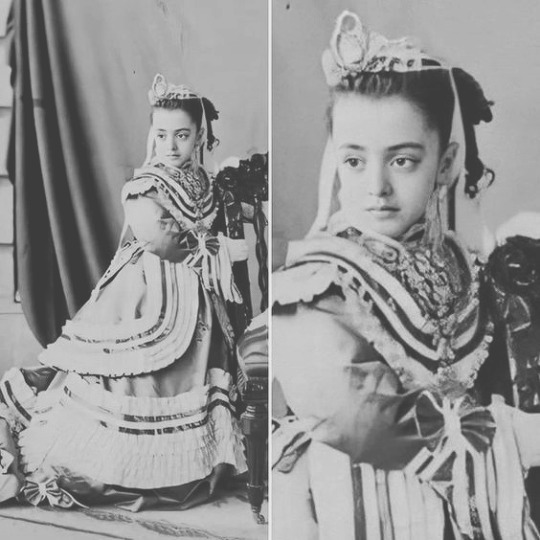
Saliha Sultan in the 1870s
In this period [1867], the young ladies and young girls had completely abandoned the old dresses with three tails or trains and the baggy pants underneath; fashion now demanded shirts with a single train which was caught up and attached to the belt – there were now petticoats instead of şalvars or the baggy pants previously worn. The headdresses had also changed with the times and now usually matched the costumes; there were earrings with jewels, medallions and elaborate hairstyles, garnished with precious stones. — Leyla (Saz) Hanımefendi, The Imperial Harem of the Sultans. Daily Life at the Çıragan Palace During the Nineteenth Century
As for outerwear:
Women changed the thicker cloth they had traditionally used for their feraces (long flowing outer garments) for a much thinner material. They changed their yellow boots of morocco leather for shoes with trimmings of imitation gold thread, which they wore with thin, white socks. They began to use thinner veils and they turned covering themselves into a method for making themselves more alluring, a trend appreciated by Ali Rıza Bey, who commented that ‘the veils of our women, which were a means of ornamenting the face rather than concealing it, became finer. How charming the colourful feraces looked! And these finer veils were unable to obscure the beauty [behind]’. — Ebru Boyar, Kate Fleet - A Social History of Ottoman Istanbul
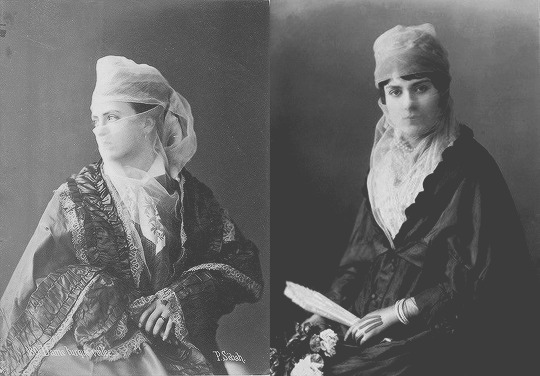
These photographs are great examples of just how fine veils had become. They basically did not hide any feature and this was a problem for conservatives (and sultans as well):
The çarşafs had become merely ordinary dresses, the feraces had turned into sleeveless capes, the veils had become too thin. [Abdülhamid II] issued an order that this should not occur. Further, women were not to wear coats or short, tight-waisted jackets which imitated military styles — Ebru Boyar, Kate Fleet - A Social History of Ottoman Istanbul

In the photograph above you can see a western dress underneath the ferace and several rows of what seem to be pearls.
In the XIX century, women (especially wealthy women of course) began to go out more, especially to pleasure gardens or at the Bosphorus shore. This meant that new accessories began to be used, among them the parasol. As pleasure gardens (ie. parks) were public places, men and women could see each other in these occasions:
A parasol in the rowing boat! It explains what the person wants to say. For example, if it is bent a little to one side, it means ‘I am annoyed with you’, if it is bent over further, ‘I am really angry’, if it completely covers the face, it means ‘you will not see my face again’, ‘I don’t want to see you, have you still not understood?’, if it swings hard from right to left, it signifies ‘don’t stay, pass by’, ‘return, go’, if it falls slightly to the front, it is in the place of a greeting, ‘welcome, sir’, if it falls a lot, ‘my heart has beaten again’, if it goes to the back, it means ‘oh!’, if it leans all the way over backwards, ‘what a state I am in, see me and have pity!’, if it is held to the side, ‘oh, how fine, what happiness this is!’, if it is opened and closed, it means ‘not tonight, tomorrow’, if it is closed and stays so, ‘we will make an appointment for the following day — Ebru Boyar, Kate Fleet - A Social History of Ottoman Istanbul
Men too had secret gestures:
making signs with the eyes and eyebrows, winking one eye, making as if wiping your face with a handkerchief, smelling the handkerchief with which you have just wiped your face, sighing deeply, and placing your hand over your heart. Placing your hand on your temple and half-closing then closing your eyes means ‘I am dying for you’, unbuttoning of one or two buttons of the waistcoat means ‘my heart is palpitating, I cannot bear this beating’. If you have a cigarette in your mouth, even if it is newly lit, and you take it from the corner of your mouth and hurl it away, this is because women do not like addiction to tobacco any more than its smell. To call over a beggar and give him a few coins demonstrates your compassion and generosity. To be busy looking at the posters outside Manakyan’s theatre is a sign of liking romantic themes such as La Dame aux camelias or Countess Sara. — Sermet Muhtar Alus, 30 Sene Evvel İstanbul. 1900’lü Yılların Başlarında Şehir Hayatı
... clothing made in European fashion, top hats, fancy canes, pet dogs, piano lessons, French language lessons, operas, dances, and balls, to the eventual employment of Western literary forms such as the novel, short story, and newspaper and the print culture it introduced, which had profound effects in creating new visions of Ottoman society and the individuals living within it. These literary forms constructed a new image of an Ottoman as a refined man "introverted, very sensitive, knowledgeable in Western music and literature, conversant in a Western language, positivist, attributing value to human beings, and subscribing to a Western style of life" — Fatma Müge Göçek, Rise of the Bourgeoisie, Demise of Empire; Ottoman Westernization and Social Change
Of course the same craze invested the Palace. Sisters Fatma and Mediha are clearly wearing European gowns and accessories:

Fatma Sultan around 1870 and Mediha Sultan in 1888
In the photograph below we can see Refia Sultan dressed exactly like a European woman in 1865. 1865 is very early but she was very interested in everything that came from Europe.

I was not able to identify these people but they're clearly from the Ottoman empire:

the lady is particularly interesting because not only is she wearing a European-style tiara but she seems to be also wearing the Order of the Charity (the white sash) 1st class, which was usually awarded to princesses.
Here we have sisters Hatice, Fehime and Fatma (all daughters of Murad V). The European style of their clothes and accessories is pretty evident.
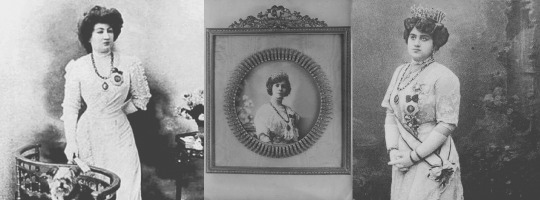

Rukiye Sabiha Sultan on her wedding day in 1921
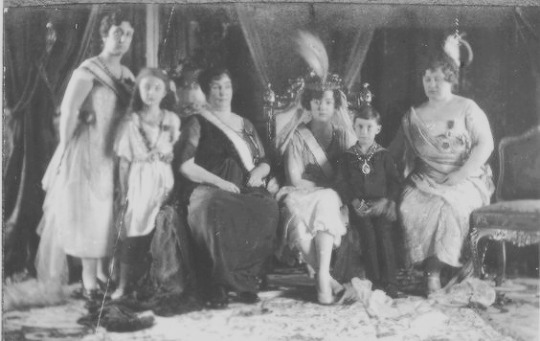
other photo of Rukiye Sabiha Sultan’s wedding
So... yeah, by the fall of the empire clothes were completely European.
#anon#ask post#ask: ottoman history#ottoman fashion#ottoman photos#late ottoman empire#nazima sultan daughter of abdulaziz#naime sultan daughter of abdulhamid ii#saliha sultan daughter of abdulaziz#fatma sultan daughter of abdulmecid i#mediha sultan daughter of abdulmecid i#refia sultan daughter of abdulmecid i#hatice sultan daughter of murad v#fehime sultan daughter of murad v#fatma sultan daughter of murad v#rukiye sabiha sultan daughter of mehmed vi
195 notes
·
View notes
Photo

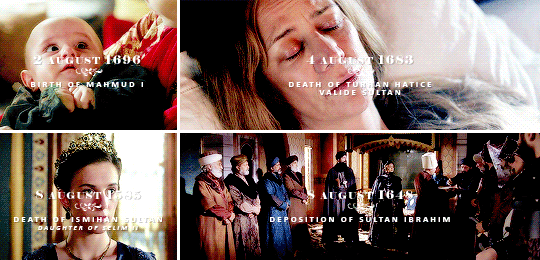


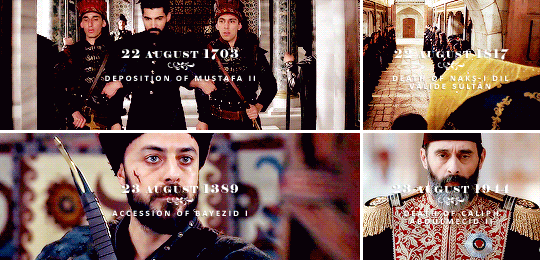




𝐢𝐧 𝐭𝐡𝐞 𝐦𝐨𝐧𝐭𝐡 𝐨𝐟 𝐚𝐮𝐠𝐮𝐬𝐭 𝐢𝐧 𝐨𝐭𝐭𝐨𝐦𝐚𝐧 𝐡𝐢𝐬𝐭𝐨𝐫𝐲 | insp by @winterhalters
#history#historyedit#ottoman history#ottomanladiesedit#*everymonth#turhan hatice sultan#ismihan sultan daughter of selim ii#ibrahim I#ayse sultan daughter of abdulhamid ii#esma sultan daughter of ahmed iii#cemile sultan daughter of abdulmecid i#mustafa ii#naksidil sultan#bayezid i#abdulmecid ii#emine sultan daughter of abdulaziz#aliye sultan daughter of murad v#behice sultan daughter of abdulmecid i#fatma sultan daughter of abdulmecid i#rukiye sabiha sultan daughter of mehmed vi#selim i#murad v
139 notes
·
View notes
Photo

Rukıyye Sabîha Sultân (front) with her three daughters: Nesl-i Şâh Sultân, Hân-zâde Sultân and Neclâ Hibetullâh Sultân. Sabiha Sultan (1894-1971) was the youngest daughter of the last Ottoman sultan Mehmed VI Vahideddin and his Senior Imperial Consort Emîne Nâzik-edâ Başkadınefendi. She married Şehzâde Dâmâd 'Ömer Fârûk Efendi, the only son of the last Caliph of Islam Abdülmecîd II, in order to connect the two branches of the Ottoman Imperial family.
#history#ottoman history#rukiye sabiha sultan daughter of mehmed vi#fatma neslisah sultan daughter of sehzade omer faruk#hanzade sultan granddaughter of abdulmecid ii#necla hibetullah sultan granddaughter of abdulmecid ii#ottoman photos
32 notes
·
View notes
Note
Is there any Ottoman princess who still has descendants today.
Hello, sure! I'm going to list them using the "Genealogy of the Ottoman Empire" published in 2005 as source, as it's the most recent genealogy work I have.
descendants of Mediha Sultan, daughter of Abdülmecid I
Leila Mediha Samy (b. 5.10.1955): great-granddaughter. She has a son called Henry Orhan Samy Beggin (b. 21.9.1991)
Mustafa Reshid Sami (b. 12.11.1952): great-grandson. He has a daughter called Zoe-Jo Sami (b. 23.4.1994)
Ekrem Abdurrahman Sami (b. 2.9.1954): great-grandson. He has two children: Rebecca Anne Sami (b. 7.12.1982) and Ömer Ryan Sami (b. 2.4.1993)
Catherine Melek Samy (b. 28.1.1960): great-granddaughter. She has two children: India Holy Samy-Lewis (b. 29.12.1998) and Anouchka Sky Evyleen Samy-Lewis (b. 16.6.2000)
descendants of Cemile Sultan, daughter of Abdülmecid I
Naile (b. 1912): great-granddaughter. I'm not sure she's still alive but she has two children: Engin (b. 1933) and Sevil (b. 1942)
Behremend (b. 1917): great-granddaughter. Again, I'm not sure she's still alive but she has a daughter: Gülnûr Sertel (b. 1955) who, in turn, has a son, Kenan (b. 1973)
Bilge (b. 1933): great-great-granddaughter. I'm not sure she's still alive.
Fatma Nühbe Çubukçu (b. 1949): great-great-granddaughter.
Fuad Bengü (b. 24.8.1948): great-great-grandson
Dogan Bengü (b. 5.5.1959): great-great-grandson
Arzu Bengü (b. 9.11.1969): great-great-granddaughter
Edhem Dömeke (b. 22.5.1933): great-grandson. He has two daughters: Ayşe Dömeke (b. 1971) and Aylin Dömeke (b. 1976)
descendants of Esma Sultan, daughter of Abdülaziz Han
Alp Saadeddine Mohamed Bey Osmansoy (b. 1930): grandson. He has three children: Orhan Saadeddine Osmansoy (b. 1969), Shirine Mohamed Bey (b. 1970) who in turn has a son, Kamil Mahmoud Faour (b. 1999); Ayline Mohamed Bey (b. 1976)
Kaya Mohamed Bey Osmansoy (b. 1937): grandson.
Aydin Mohamed Bey Osmansoy (b. 1947): grandson
descendants of Hatice Sultan, daughter of Murad V
Kenize Mourad de Kotwara (b. 1940): granddaughter
descendants of Fatma Sultan, daughter of Murad V
Resan Iris (b. 15.11.1956): granddaughter. She has two children: Serra Deveci (b. 19.3.1979) and Emirhan Deveci (b. 23.3.1991)
descendants of Zekiye Sultan, daughter of Abdülhamid II
Fatma Yasemin Yegen (b. 18.9.1973): great-granddaughter
Muhsin Osman Yegen (b. 14.12.1977): great-grandson
descendants of Naime Sultan, daughter of Abdülhamid II
Bülent Ossmann (b. 2.5.1930): grandson. He has a son, Rémy Chengiz Ossmann (b. 16.11.1963) who, in turn, has a son: Sélim Ossmann (b. 14.12.1992)
Koubilay (b. 1937): grandson. He has three children: Shehnaz (b. 1970), Inci (b. 1972) and Orhan (b. 1975)
descendants of Ayşe Sultan, daughter of Abdülhamid II
Ayşe Rebia Nami (b. 3.8.1945): granddaughter.
Mediha Şükriye Nami Osmanoğlu (b. 24.5.1947): granddaughter. She has a daughter: Ayşe Marie-Christine Nami-Conopio (b. 16.7.1969)
Fethiye Nimet Nami Osmanoğlu (b. 21.3.1953): granddaughter.
Ayşe Adile Nami Osmanoğlu (b. 6.8.1958): granddaughter. She has two children: Osman Necati Ferhat Ariba (b. 31.1.1980) and Ayşe Feyzan Ariba (b. 9.9.1983)
Gul Nür Dorothée Nami Osmanoğlu (b. 10.1.1960): granddaughter. She has three children: Hanzade Audrey Nami-Ragot (b. 4.2.1988), Ayzade Maylis Nami-Ragot (b. 16.6.1991) and Aléxis Cem Nami-Ragot (b. 11.3.1993)
Ayten Sofia Nami Osmanoğlu (b. 24.3.1961): granddaughter. She has a daughter: Refia Roksan Kunter (b. 10.8.1984)
descendants of Fatma Ulviye Sultan, daughter of Mehmed VI
Ismail Halim Özba (b. 6.10.1945): grandson. He has two children: Nadia Özba (b. 1969) and Halil Özba (b. 1974)
Hanzade Özba (b. 4.10.1953): granddaughter. She has two chidren: Neslişah Evliyazade (b. 1977) and Mesude Evliyazade (b. 1978)
descendants of Rukiye Sabiha Sultan, daughter of Mehmed VI
Prince Abbas Hilmi of Egypt (b. 16.10.1941): grandson. He has two children: Fatma Sabiha Hilmi (b. 28.9.1974) and Daoud Abd El Moneim Hilmi (b. 23.6.1979)
Princess Ikbal of Egypt (b. 22.12.1944): granddaughter
Princess Sabiha Fazile Ibrahim of Egypt (b. 8.8.1941): granddaughter. She has two sons: Ali-Suad Ürgüplü (b. 28.9.1967) and Mehmed-Selim Ürgüplü (b. 31.10.1968)
Prince Ahmed Rifat Ibrahim of Egypt (b. 31.8.1942): grandson
Prince Osman Rifat Ibrahim (b. 20.5.1951): grandson
#anon#ask post#ask: ottoman history#mediha sultan daughter of abdulmecid i#cemile sultan daughter of abdulmecid i#esma sultan daughter of abdulaziz#hatice sultan daughter of murad v#fatma sultan daughter of murad v#zekiye sultan daughter of abdulhamid ii#naime sultan daughter of abdulhamid ii#ayse sultan daughter of abdulhamid ii#fatma ulviye sultan daughter of mehmed vi#rukiye sabiha sultan daughter of mehmed vi#Anonymous
18 notes
·
View notes
Note
Fatma Sultan (daughter of Murad V) actually married a man eight years younger than her, as I saw in Genealogy of Ottoman Family 2005, it was mentioned that Refik Bey was born in 1887, and Fatma was born in 1879. Were there any other princesses who married younger mans?
Fatma - and Murad V's daughters in general - is a special case because they lived under house arrests for 20 years.
Interestingly, another princess who had an unusual life, Behice Sultan, married someone younger than her: Halil Hamîd Beyefendi, who was six years her junior.
The husband of Seniha Sultan, the notorious Mahmud Celaleddin Paşa, was two years her junior.
Emine Naciye Sultan's second husband - Mehmed Kâmil Paşa - and brother of her first husband, Enver Paşa, was two years her junior.
Murad V's granddaughter (through his only son) Rukiye Sultan's husband, Şerif Abdülmecîd Beyefendi, was four years her junior. She too was born and lived in Çırağan Palace for 20 years.
Murad V's daughter Hatice Sultan's second husband, Raüf Hayreddîn Beyefendi, was one year her junior. Her sister Fehime's second husband too was younger than her: Mahmûd Bey was 5 years her junior, being born in 1880.
Â'dile Hanım-Sultân, the daughter of Fatma Naime Sultan and Mehmed Kemaleddîn Paşa, married a man three years her junior, Şehzâde Mahmûd Şevket Efendi, grandson of Sultan Abdülaziz.
Rukiye Sabiha Sultan's husband, Şehzâde Ömer Fârûk Efendi (son of the last Caliph, Abdülmecîd II) was five years her junior. Rukiye Sabiha Sultan was Mehmed VI Vahideddin's second daughter.
#anon#ask post#ask: ottoman history#fatma sultan daughter of murad v#hatice sultan daughter of murad v#fehime sultan daughter of murad v#seniha sultan daughter of abdulmecid i#rukiye sultan granddaughter of murad v#adile hanimsultan granddaughter of abdulhamid ii#rukiye sabiha sultan daughter of mehmed vi#Anonymous
8 notes
·
View notes
Note
Cousin marriages in Ottoman Empire list
Some are first cousins, some are not... I tried. It was very hard.
Süleymân Bey, grandson of Osman I through Savcı Bey, married Hadîce Hâtûn, daughter of Orhan I (and therefore granddaughter of Osman I)
Şehzade Abdullah, son of Bayezid II, married Ferah-şâd Sultan, the daughter of his father's brother Şehzade Mustafa
Şehzade Alâeddîn, grandson of Bayezid II through Şehzade Ahmed, married the unnamed daughter of Ayn-i Şâh Sultân, daughter of Bayezid II
Şehzâde Mehmed-Şah, grandson of Bayezid II through Şehzâde Şehenşâh, married Şâh-nisâ Sultan, granddaughter of Bayezid II through Şehzade 'Abdullah
Hatice Şükriye Sultan, daughter of Yûsuf 'izzeddîn Efendi (and therefore granddaughter of Sultan Abdülaziz), married Şehzâde Dâmâd Mehmed Şerefeddîn Efendi (grandson of Abdülmecid I through his son Selim Süleyman Efendi)
Mahmud Şevket Efendi, grandson of Sultan Abdulaziz through Mehmed Seyfeddîn Efendi, married Â'dile Hanım-Sultân, daughter of Fatma Naime Sultan (and therefore granddaughter of Abdülhamid II)
Dürriye Sultan, daughter of Zıyâeddîn Efendi (and therefore granddaughter of Mehmed V) married Sultân-zâde Dâmâd Mehmed Câhid Beyefendi, son of Fatma Naime Sultan (and therefore grandson of Abdülhamid II). Fun Fact: Mehmed Cahid Beyefendi subsequently married Dürriye’s maternal aunt, Levrens Hanim.
Emine Mukbile Sultan, daughter of Ömer Hilmi Efendi (and therefore granddaughter of Mehmed V), married Dâmâd Şehzâde Alî Vâsib Efendi, the grandson of Murad V through his only son Mehmed Salaheddin Efendi.
Rukiye Sabiha Sultan, daughter of Mehmed VI, married Şehzâde Dâmâd 'Ömer Fârûk Efendi, son of Caliph Abdülmecid II. Fun Fact: Ömer Fârûk Efendi divorced Rukiye Sabiha Sultan to marry his first cousin Mihrbân Mihr-i Şâh Sultân
#anon#ask post#ask: ottoman history#osman i#orhan#bayezid ii#abdulaziz#naime sultan daughter of abdulhamid ii#murad v#mehmed v#mehmed vi#abdulmecid ii#rukiye sabiha sultan daughter of mehmed vi#Anonymous
17 notes
·
View notes
Text
On this day, 26 August, in Ottoman history
26 August 1814 - birth of Şehzade Mehmed: the first of three sons of Mahmud II to be called Mehmed, he would died only three months later, in November 1814.
26 August 1848 - birth of Behice Sultan: daughter of Sultan Abdülmecid and Third İkbal Nesrin Hamın, she was born in Çırağan Palace. Behice was infected with tuberculosis, the illness which would later kill both her parents, in childhood and was treated by foreign doctors for years, thus delaying her marriage. The princess, though, wanted to get married as soon as possible and pushed for a betrothal. Her uncle Abdülaziz, who succeeded her father, chose Halil Hamid Paşazade Hamid Bey for her, who was said to have been good-looking and well-dressed. Behice did not know her betrothed but her sister Refia, who was not ill and so not confined, told her in a letter that she had seen him from a window and liked him very much. Her younger sister Seniha too would send her letters, in an attempt to cheer the poor confined princess up. Finally, it was decided that Behice and Hamid Bey would get married in 1876, but their happiness was short-lived: Behice Sultan died on November 30th, only 14 days after the wedding. She was buried in the mausoleum of her great-grandmother Nakşıdil Sultan.
26 August 1873 - birth of Şehzade Mehmed Ziyaeddin: eldest son of the future Mehmed V Reşad and his Senior Imperial Consort Kamures Başkadınefendi. He had five consorts: Perniyan Hamın, Unsiyar Hamın, Perizad Hamın, Melek Seyran Hamın and Neshemend Hamın. Through them, he fathered eight children: Behiye Sultan (1900 - 1950), Dürriye Sultan (1905 - 1922), Rukiye Sultan (1906 - 1927), Hayriye Sultan (1908 - 1943), Şehzade Mehmed Nazim (1910 - 1984), Lutfiye Sultan (1910 - 1997), Şehzade Ömer Fevzi (1912 - 1986), and Mihrimah Sultan (1920 - 2000). Şehzade Mehmed Ziyaeddin died on 30 January 1938 in Alexandria, Egypt, and was buried in Cairo.
26 August 1884 - death of Fatma Sultan: eldest daughter of Sultan Abdülmecid and Fifth Imperial Consort Gülcemal Kadınefendi, she was Sultan Reşad and Refia Sultan's full sister. At the age of 14 she was engaged to Ali Galip Bey, who was 25. They were married on 10 August 1854 but the marriage was short-lived as Galip Bey, now Paşa, drowned at sea on 14 September 1858. She secondly married Mabeynci Mehmed Nuri Bey, though Fatma had asked for the more handsome Mabeynci Salih Paşa. They were married on 24 March 1859 and had two children together: Sultanzade Mehmed Fuad (1859-1862) and Emine Lutfiye Hanımsultan (1863-1866). Fatma Sultan was Murad V's favourite sister and she was especially happy when their uncle Abdülaziz was dethroned in his favour. Unfortunately it was not to be, and Murad V was himself dethroned for their younger brother Abdülhamid II. The new sultan deeply distrusted Damat Nuri Paşa and exiled him to Saudi Arabia, where he died. Thus, Fatma became one of the opponents to the new regime and was one of the conspirators - together with her siblings Şehzade Ahmed Kemaleddin, Şehzade Suleyman, Seniha Sultan, and Seniha Sultan's husband and sons - to free Murad V from Çırağan Palace and reinstate him on the throne. She again defied Abdülhamid II when she ordered the guards around Çırağan to ler her in: “Indeed! And just who is preventing me from entering? Is it that miserable blackguard? Who does he think he is, trying to keep me from visiting my brother? I want to see my brother, and until I do, I am not moving! I shall spend the night here if I must!” Afterwards, she was forced back into her villa until her death on 26 August 1884.
26 August 1971 - death of Rukiye Sabiha Sultan: third daughter of Mehmed VI and Emine Nazikeda Başkadın, she was born in Ortaköy Palace. Her mother suffered greatly after her birth and wasn’t able to have any more children. Her hand was offered to Mustafa Kemal Paşa (the future Mustafa Kemal Atatürk) but in the end the princess married her cousin Ömer Faruk Efendi, son of Caliph Abdülmecid II, in an attempt to join the two branches of the Dynasty. The celebration took place on 29 April 1920 in Yıldız Palace. She gave birth to Neslişah Hanım Sultan on 2 February 1921 in Nişantaşı Palace, Zehra Hanzade Hanım Sultan on 12 September 1923 in Dolmabahçe Palace, and Necla Hibetullah Hanım Sultan on 14 September 1927 in Nice, France. In 1938, the family moved to Egypt, where her eldest daughter married the heir of the last khedive of Egypt. In 1948 Sabiha Sultan and Ömer Faruk divorced, and the princess returned to Istanbul in 1952. She lived in the mansion in Çengelköy of her daughter Zehra Hanzade until her death on 26 August 1971. She was buried next to her sister Ulviye in Aşiyan Asri Cemetery.
#history#ottoman history#on this day in history#on this day in ottoman history#mahmud ii#behice sultan daughter of abdulmecid i#sehzade ziyaeddin son of mehmed v#fatma sultan daughter of abdulmecid i#rukiye sabiha sultan daughter of mehmed vi
14 notes
·
View notes
Note
Can you list some information about Abdulmecid I’s children with some information about them just like you did for Ahmed III harem + children.
Sorry for the long wait but... the guy had 42 children
Mevhibe Sultan (1840-1841), with Hoşyar Kadın: lived for only 8 months, was buried in the Hamidiye Mausoleum
Sultan V. Murad Han (1840-1904), with Şevkefza Valide Sultan: 33rd Ottoman sultan, he reigned for only 93 days, after which he was deposed on the grounds of "perpetual insanity"
Naime Sultan (1840-1843), with Tirimüjgan Kadın: Abdülhamid II's elder sister, she died of smallpox
Fatma Sultan (1840-1884), with Gülcemal Kadın: Mehmed V's eldest sister and Murad V's favourite sister. She had two husbands: Dâmâd'Alî Gaalib Paşa and Dâmâd Mehmed Nûrî Paşa, which she outlived. Her three children died in infancy and she spent the last years of her life confined in her villa in Istanbul because she had tried to reinstate Murad V on the throne. She died at the age of 44 and was buried in Murad V's mausoleum.
Behiye Sultan (1841-1847), mother unknown: she died at the age of 6 and was buried in the mausoleum of Refia Sultan. Her mother was "Her Highness, the Second Ikbal"
Neyyire Sultan (1841-1843), with Şayeste Hanım: she died at the age of 3 and was buried in the Nurosmaniye Mosque.
Refia Sultan (1842-1880), with Gülcemal Kadın: Mehmed V's elder sister. She was married to Dâmâd Mahmûd Edham Paşâ and had a daughter with him. Refia was extremely educated, like her sisters, as her father had insisted for them to be educated both in traditional and western subjects. Contrary to her younger sister Cemile, whom her father constantly lauded, Refia was a true spendthrift and her debts were staggering for just one person.
Hatice Sultan (1842-1842), with Gülcemal Kadın
Sultan II. Abdülhamid Han (1842-1918), with Tirimüjgan Kadın: 34th Ottoman Sultan, he was deposed by the Young Turks in 1909 and exiled to Thessalonika. None of his sons would ascend the throne.
Aliye Sultan (1842-1845), with Şevkefza Valide Sultan: younger sister of Murad V, she was 2 when she died and was buried in the New Mosque
Mehmed Ziyaeddin Efendi (1842-1845), with Nesrin Hanım:
Cemile Sultan (1843-1915), with Düzdidil Hanım: her mother died when she was 3, so she was raised by Rahime Perestu, future Valide Sultan. She was therefore very close to her older brother Abdülhamid II, who had been raised by Rahime Perestu as well. She married Dâmâd Mahmûd Celaleddîn Paşa in 1858, when she was fifteen. Her husband was the second son of Dâmâd Ahmed Fethî Paşa (husband of Mahmud II's daughter, Atiye Sultan) from his first wife. Fındıklı Palace was built for them. Together they had 6 children: Fethiye Hanım-Sultân (1859 - 1887), Sultân-zâde Besim Beyefendi (died at the age of 2), Sultân-zâde Sâkıb Beyefendi (1864 - 1897), Sultân-zâde Mehmed Mahmûd Celâleddîn Beyefendi (1864 - 1916), 'Ayşe Şıdıka Hanım-Sultân (1875 - 1937?), Fatma Hanım-Sultân (1879 - 1890)
Sultan V. Mehmed Reşad Han (1844-1918), with Gülcemal Kadın: 35th Ottoman Sultan, he was enthroned by the Young Turks after the deposition of Abdülhamid II and was the last sultan to die in office.
Münire Sultan (1844-1862), with Verdicenan Kadın: she firstly married the son of the Egyptian Khedive, İbrahim İlhami Paşa, and the costly wedding ceremony attracted a lot of criticism because the Imperial Army had just been defeated in Montenegro. The marriage lasted only two years, as İbrahim İlhami Paşa died at only 24 years old. She therefore married Lieutenant General Dâmâd İbrahim Paşa, with whom she had a son: Sultân-zâde 'Alâeddîn Beyefendi (1861 - 1915?). She was buried in the mausoleum of her great-grandmother, Nakşıdil Valide Sultan.
Samiye Sultan (1845-1845), mother unknown: she was buried in the New Mosque. Her mother had been listed as "Her Highness, the Third Kadinefendi"
Ahmed Efendi (1846-1846), with Nükhetseza Hanım: he was buried in the New Mosque inside the mausoleum of Refia Sultan
Fatma Nazime Sultan (1847-1847), mother unknown: she was buried in the mausoleum of Refia Sultan
Sabiha Sultan (1848-1849), with Mehtab Kadın: she was buried in the mausoleum of Refia Sultan
Mehmed Abid Efendi (1848-1848), with Tirimüjgan Kadın: he was buried in the mausoleum of Refia Sultan
Ahmed Kemaleddin Efendi (1848-1905), with Verdicenan Kadın: he was a supporter of Murad V's rights to the throne and was in a bad relationship with her other older brother, Abdulhamid II. He married his only consort, Fatma Sezâ-dil Hanımefendi, in 1876, and had two daughters with her: Atiyetullah Sultan (1878-1878) and Münire Sultan (1880-1939). His daughter married Dâmâd Mehmed Sâlih Paşa in 1907 and had a son, Sultân-zâde Ahmed Kemâleddîn (Keredin) Beyefendi (1908-1987), clearly named after her father.
Atiyetullah Efendi (?-?)
Mehmed Fuad Efendi (died in infancy), with Nergizu Hanım: he was buried in the mausoleum of Refia Sultan
Behice Sultan (1848-1876), with Nesrin Hanım: she lost her mother at the age of 3 and contracted tuberculosis in childhood. She lived secluded all her life and her sisters Refia and Seniha always sent her letters to cheer her up, even though they knew that Behice's illness had reached the final stage by the time she had turned 20. In her letters, Behice came across as frustrated, jealous of her sisters' freedom and extremely sensitive. Her dowry had been prepared by her father but her illness always prevented her from getting married, even though that was her dream. Finally, her uncle Abdülaziz consented, and Behice married Dâmâd Halil Hamîd Beyefendi on 16 November 1876. Unfortunately, the princess died just 20 days later at the age of 28. She was buried in the mausoleum of Münire Sultan.
Mehmed Burhaneddin Efendi (1849-1876), with Nükhetseza Hanım: he was Abdülhamîd II's favourite brother, who also named a warship after him. He had two consorts: Mest-i Niyâz Hanımefendi and Şâd-rûy Hanımefendi. From his first consort, he had an unnamed daughter (1876? -1890?) and Ibrahim Tevfik Efendi (1874-1931). He was buried in the mausoleum of his father Abdülmecid
Rukiye Sultan (1850-1850), with Gülcemal Kadın:
Mukbile Sultan (1850-1850), mother unknown: buried in the mausoleum of Refia Sultan, her mother had been listed as "Her Highness, the Fourth Ikbal"
Mehmed Vamık Efendi (1850-1850), mother unknown: buried in the mausoleum of Refia Sultan
Nizameddin Efendi (1850-1853), with Nesrin Hanım: twin of Bahaeddin Efendi, he was buried in the mausoleum of Murad V
Bahaeddin Efendi (1850-1852), with Nesrin Hanım: twin of Nizameddin Efendi, he was buried in the mausoleum of Refia Sultan
Ahmed Nureddin Efendi (1852-1885), with Mehtab Kadın: he had two consorts, Nazlı Emşâl Hanımefendi and an unnamed one, but no children. He died at the age of 33 and was buried in the mausoleum of Murad V
Mehmed Rüşdü Efendi (1852-1852), with Ceylanyar Hanım: buried in the Hamidiye Tomb.
Osman Safiyeddin Efendi (1852-1855), with Ayşe Serfiraz Hanım: buried in the mausoleum of Abdülmecid I
Seniha Sultan (1853-1931), with Nalandil Hanım: she married Dâmâd Âsaf Mahmûd Celaleddîn Paşa (the son of Dâmâd Halil Rifat Paşa after the death of Saliha Sultan, daughter of Mahmud II) in 1877. Celaleddîn Paşa wasn't particularly trusted by Abdülhamid II but was nevertheless appointed vizier. Seniha and her husband participated in the Ali Suavi Incident, actually a conspiracy to dethrone Abdulhamid II and re-instate Murad V, the failure of which - among other things - prompted Celaleddîn Paşa to leave the Ottoman empire and settle in Bruxelles. Together, they had two sons: Sultân-zâde Mehmed Sabâhaddîn Beyefendi (1877-1948) and Sultân-zâde Ahmed Lutfullâh Beyfendi (1880-1973). Her son Sabâhaddîn was a vocal critic of Abdülhamid II's regime and was actually the leader of a faction inside the Young Turks movement which advocated some of the same liberal principles of the CUP but instead favoured administrative decentralization and European assistance. At the time of the Dynasty's exile from Turkey, Seniha Sultan was the eldest princess alive. She lived with Mehmed VI in Sanremo until his death, then moved to Nice, where the last Caliph Abdülmecid II had settled down but was not in favour because she was part of the "Mecid branch" of the family. She spent her last years bedridden in a room inside the caliph's villa and Nice and died there in 1931. She was buried in the Sultan Selim Mosque in Damascus.
Abdullah Efendi (1853-1853), with Şayeste Hanım: stillborn
Mehmed Abdüssamed Efendi (1853-1855), with Nalandil Hanım: buried in the mausoleum of his father
Zekiye Sultan (1855-1856), with Gülistu Kadın: twin of Fehime Sultan, was buried in the mausoleum of Münîre Sultân
Fehime Sultan (1855-1856), with Gülistu Kadın: twin of Fehime Sultan, was buried in the mausoleum of Münîre Sultân
Mediha Sultan (1856-1928), with Gülistu Kadın: elder sister of Mehmed VI, she fell in love with the son of Sâmi Paşa and started corresponding with him. When Abdülhamid II found out, he sent Necib Bey at the embassy in Paris. Mediha was devastated: she would not drink, eat or sleep. Her step-mother Verdicenan asked Rahime Perestu Valide Sultan's help, and together they were able to convince Abdülhamid to let the princess marry Necib Bey, which she did in 1879. Mediha had a son with him, Sultân-zâde 'Abdurrahmân Sâmî Beyefendi (1880-1961), but her happiness was short-lived: her husband died in 1885 at the age of 29. In 1886, she married her second husband, Dâmâd Mehmed Ferîd Paşa, but had no children with him.
Naile Sultan (1856-1882), with Şayeste Hanım: she married Dâmâd Çerkes Kabasakâl Mehmed Paşa who, according to Ayşe Osmanoğlu, was a brother of Abdülhamid II's consort Bidar Kadın. They had no children. She was buried in the mausoleum of Murad V
Bedia Sultan (1857-1858), with Ayşe Serfiraz Hanım: she was buried in the mausoleum of Münîre Sultân.
Selim Süleyman Efendi (1860-1909), with Ayşe Serfiraz Hanım: he had 5 consorts: Filiz-san Hanımefendi, Emîne Câvidân Hanımefendi, Fatma ikbâl Hanımefendi, 'Ayşe Tarz-ı ter (Tarz-ender) Hanımefendi and Zât-ı Melek Hanımefendi. His children were: Mehmed 'Abdülhalîm Efendi (1894-1926), Emine Naciye Sultan (1896-1961), and Damad Mehmed Şerefeddin Efendi (1904-1966)
Sultan VI. Mehmed Vahideddin Han (1861-1926), with Gülistu Kadın: last sultan of the Ottoman Empire, he was deposed in 1922 when the Republic of Turkey was proclaimed and exiled in 1924. He died in Sanremo, Italy
#anon#ask post#ask: ottoman history#abdulmecid i#murad v#abdulhamid ii#mehmed v#mehmed vi#fatma sultan daughter of abdulmecid i#refia sultan daughter of abdulmecid i#cemile sultan daughter of abdulmecid i#munire sultan daughter of abdulmecid i#sehzade ahmed kemaleddin son of abdulmecid i#behice sultan daughter of abdulmecid i#sehzade mehmed burhaneddin son of abdulmecid i#seniha sultan daughter of abdulmecid i#mediha sultan daughter of abdulmecid i#naile sultan daughter of abdulmecid i#sehzade selim suleyman son of abdulmecid i
21 notes
·
View notes